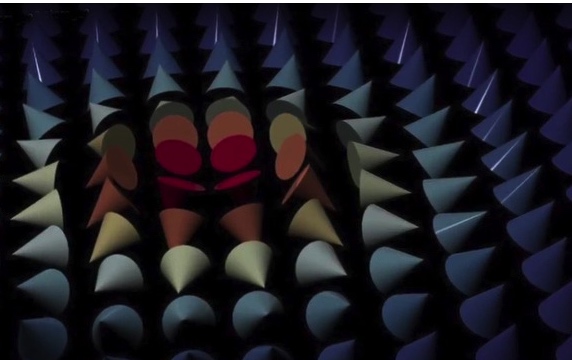R&D: Nanoscale Magnetic Whirlpools or Skyrmions to Create New Ways to Store Data
£7 million research program led by Durham University
This is a Press Release edited by StorageNewsletter.com on August 17, 2016 at 2:51 pmThe use of nanoscale magnetic whirlpools, known as magnetic skyrmions, to create novel and efficient ways to store data will be explored in a new £7 million research programme led by Durham University.
Representation of magnetic skyrmions
Skyrmions, which are a new quantum mechanical state of matter, could be used to make our day-to-day gadgets, such as mobile phones and laptops, much smaller and cheaper whilst using less energy and generating less heat.
It is hoped that better and more in-depth knowledge of skyrmions could address society’s ever-increasing demands for processing and storing large amounts of data and improve current HDD technology.
Scientists first predicted the existence of skyrmions in 1962 but they were only discovered experimentally in magnetic materials in 2009.
The UK team, funded by the Engineering and Physical Sciences Research Council (EPSRC), now aims to make a step change in our understanding of skyrmions with the goal of producing a new type of demonstrator device in partnership with industry.
Skyrmions, tiny swirling patterns in magnetic fields, can be created, manipulated and controlled in certain magnetic materials. Inside a skyrmion, magnetic moments point in different directions in a self-organised vortex. They are only very weakly coupled to the underlying atoms in the material, and to each other, and their small size means they can be tightly packed together. Together with the strong forces that lock magnetic fields into the skyrmion pattern, the result is that the magnetic information encoded by skyrmions is very robust.
Scientists can potentially move a kyrmion with 100,000 times less energy than is needed to move a ferromagnetic domain, the objects currently used in the memory of our computers and smartphones. Currently when we access information through the web, we remotely use HDD drives that generate lots of heat and waste lots of energy. Skyrmionic technology could allow this to be done on smaller scale devices which would use much less energy.
Professor Peter Hatton, Department of Physics, Durham University, who heads the research team, said: “Skyrmions hold so much promise for advancing our basic understanding of matter and, crucially, also for using them as highly efficient memory elements.
“Within the new consortium, we will bring together experts in materials synthesis and theoretical and experimental techniques so we can answer questions about the status of magnetic skyrmions and develop technological applications based on this new realm of science, known as topological physics.
“We will work very closely with industry partners and align our scientific programme with the engineering and commercial realities of modern-day information technologies.”
The national research group includes experts from the universities of Durham, Warwick, Oxford, Cambridge and Southampton.
The first prediction of a new type of stable configuration came from British physicist Tony Skyrme and has since opened up a whole variety of different sized and shaped skyrmion objects with different properties to conventional matter. However, numerous questions remain unanswered which focus on how best to exploit the unique magnetic properties of these magnetic excitations in devices.
The three generic themes the team will look at are:
• The development, discovery and growth of magnetic materials that host skyrmion spin textures;
• A greater understanding of the physics of these objects;
• Engineering of the materials to application.
The research team will use state-of-the-art facilities such as synchrotron, neutron and muon sources both within the UK and internationally.
The research is funded from summer 2016 until 2022.
The research team is currently looking for five postdoctoral research associates to join the project.












 Subscribe to our free daily newsletter
Subscribe to our free daily newsletter
